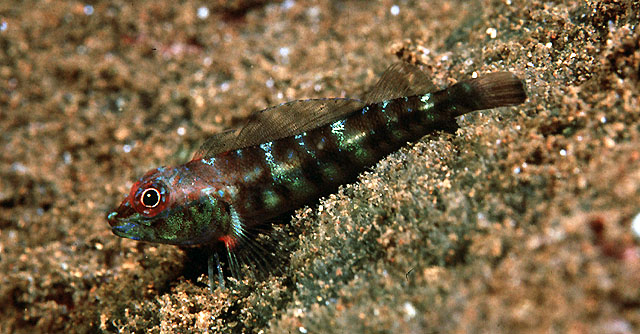| Tripterygiidae (Triplefin blennies), subfamily: Tripterygiinae |
| 3.8 cm SL (male/unsexed) |
|
demersal; marine; depth range 0 - 5 m |
| Western Pacific: described from Gunung Api and Manuk in the Banda Sea, Indonesia. |
|
Dorsal spines (total): 18-8; Dorsal soft rays (total): 10-12; Anal spines: 1-1; Anal soft rays: 21-23. Description: Dorsal rays III + XIV-XVI (usually XV) + 10-12; anal fins I, 21-23; pectoral rays 15-17; pelvic fin I, 2. Vertebrae 10+29; vertebral centrum, last pleural ribs 10. Lateral line continuous, pored scales 19-23 (usually 21); scales ctenoid; largest (twice in size) at the area posterior to pectoral-fin base and below the lateral line; head, nape, belly, and pectoral-fin base scaleless. Mandibular sensory pores, 4+1+4; orbital cirri minute (52308, 90102). Overall translucent to grey or brown, dorsal greenish, shading to yellowish tan on sides, with H-shaped bars, and horizontal stripe below eye. Male nuptial color of head and anterior body reddish, masked with black on ventral half, median fins also blackish (Ref. 90102). |
| Adults are found among exposed boulders of rocky coasts in two volcanic islets in Banda Sea (Ref. 8927, 90102). Eggs are hemispherical and covered with numerous sticky threads that anchor them in the algae on the nesting sites (Ref. 240). Larvae are planktonic which occur primarily in shallow, nearshore waters (Ref. 94114). |
|
Least Concern (LC); Date assessed: 06 May 2010 Ref. (130435)
|
| harmless |
|
Source and more info: www.fishbase.org. For personal, classroom, and other internal use only. Not for publication.

